Black Piano Painting Wall Art & Canvas Prints
Black Piano Painting Wall Art & Canvas Prints
Couldn't load pickup availability
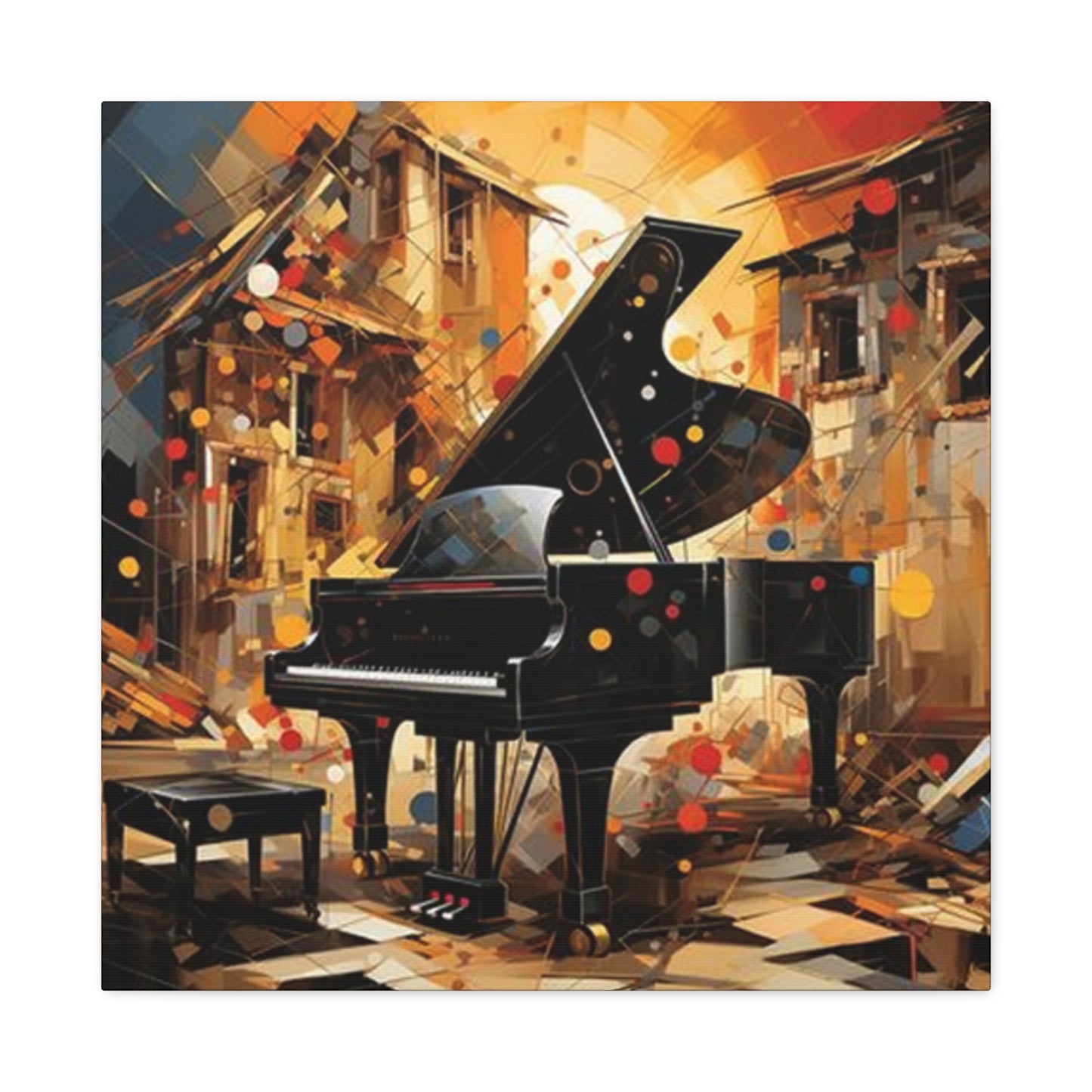
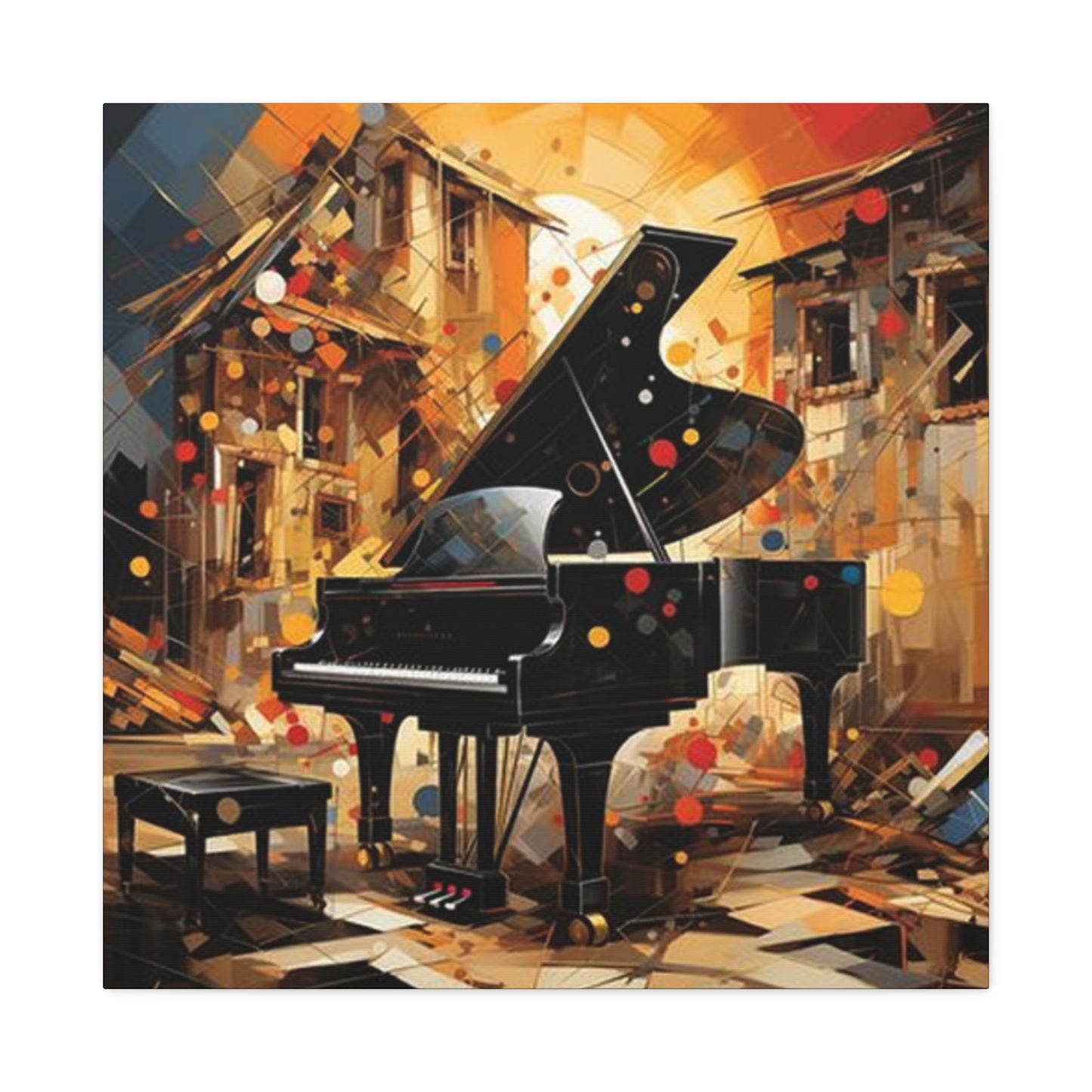
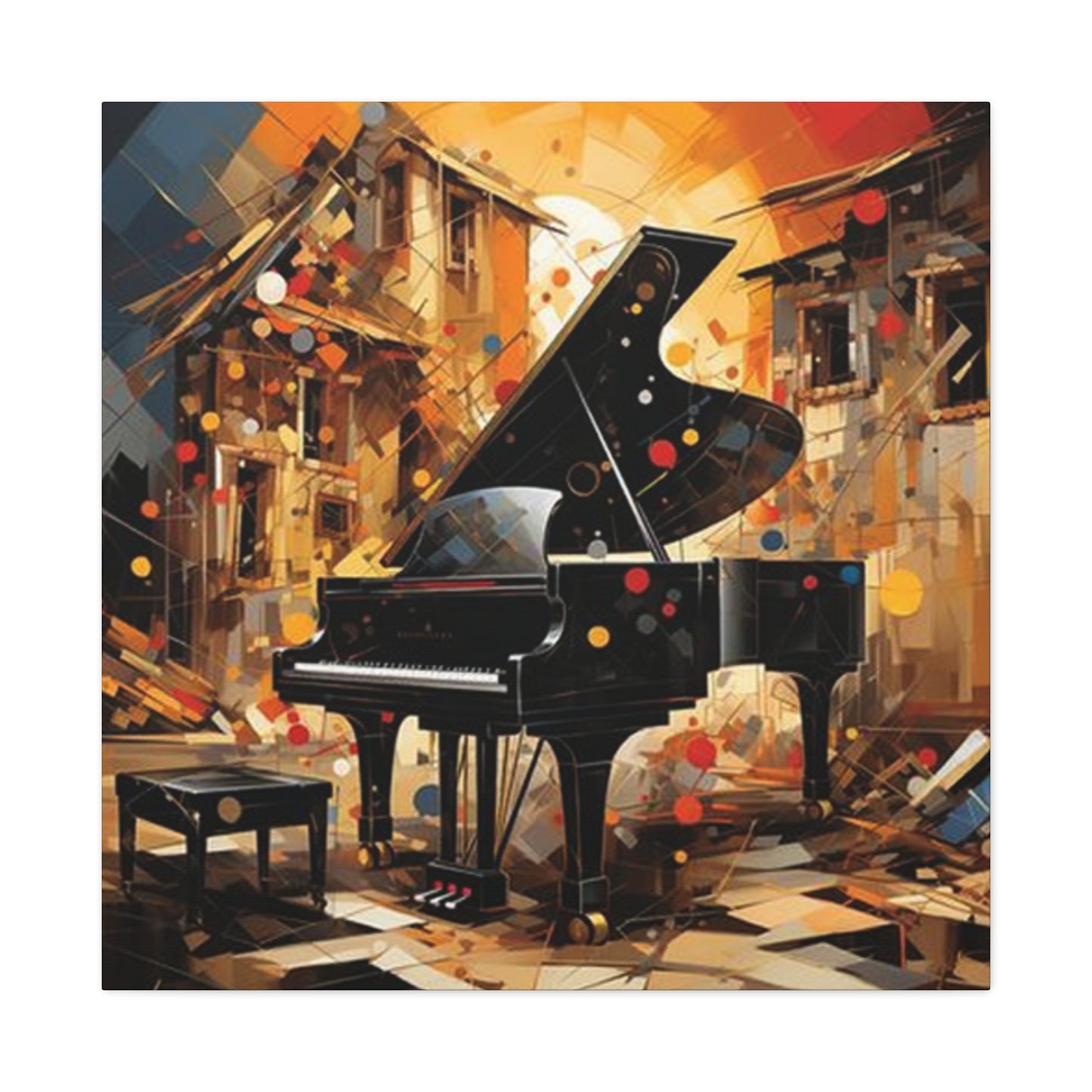
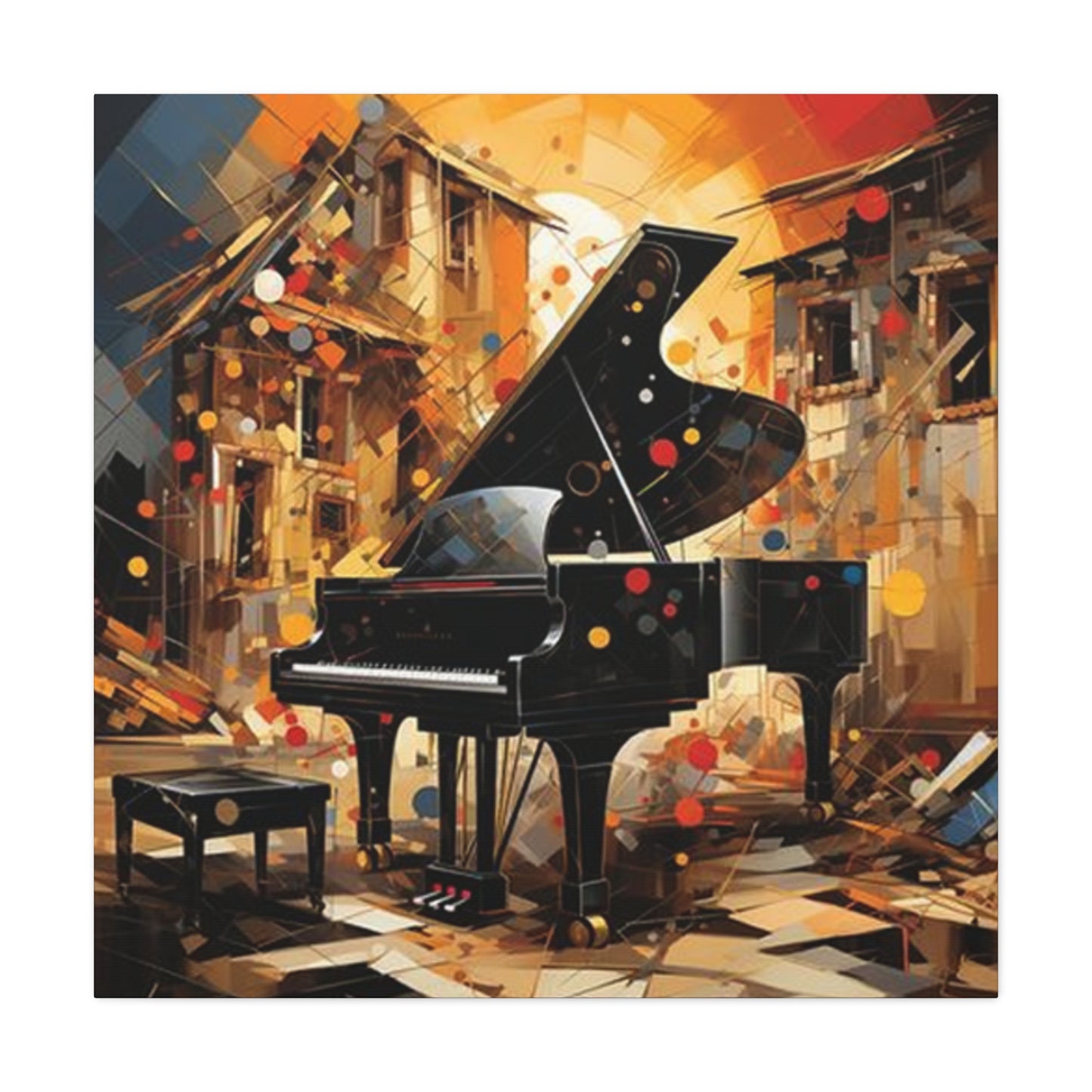
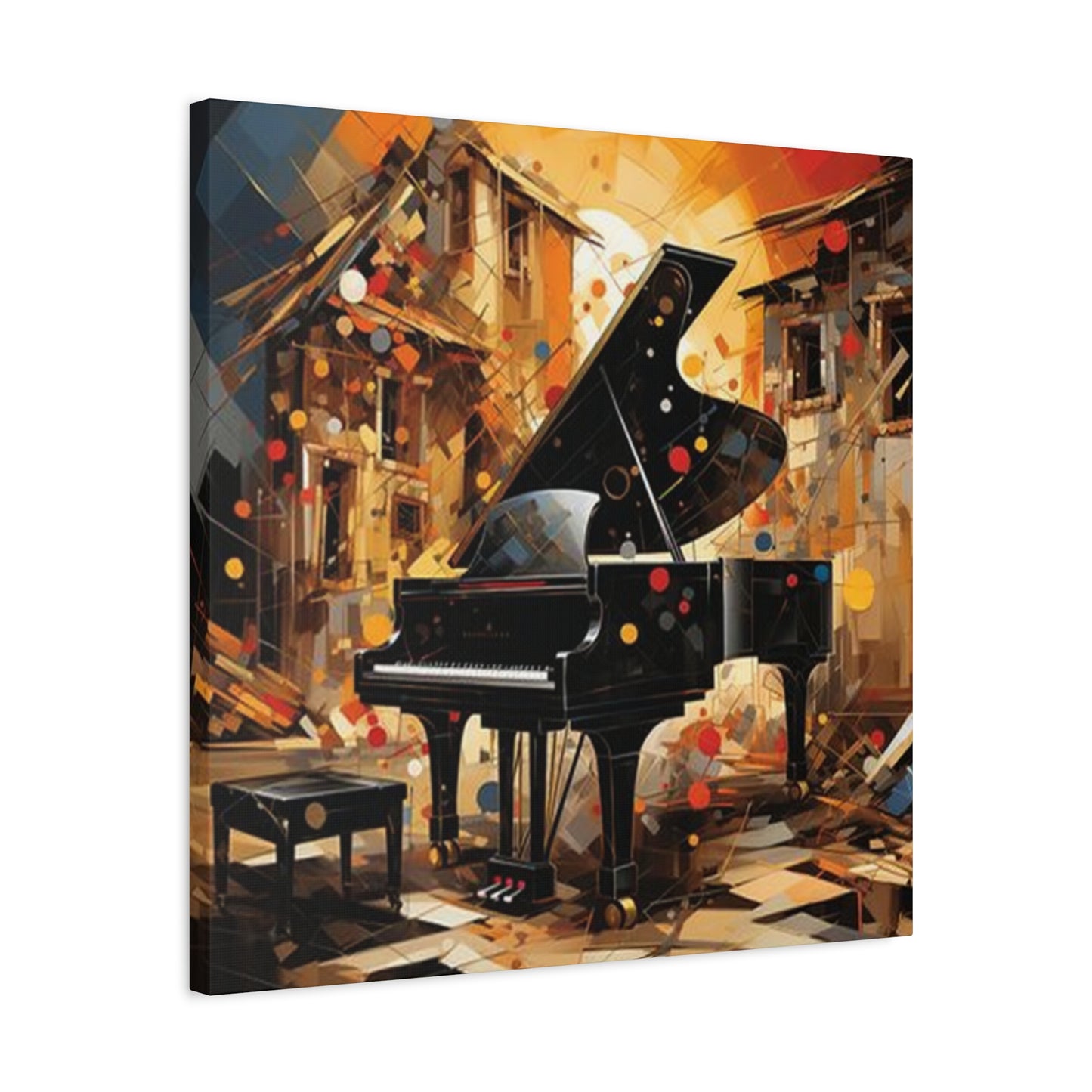
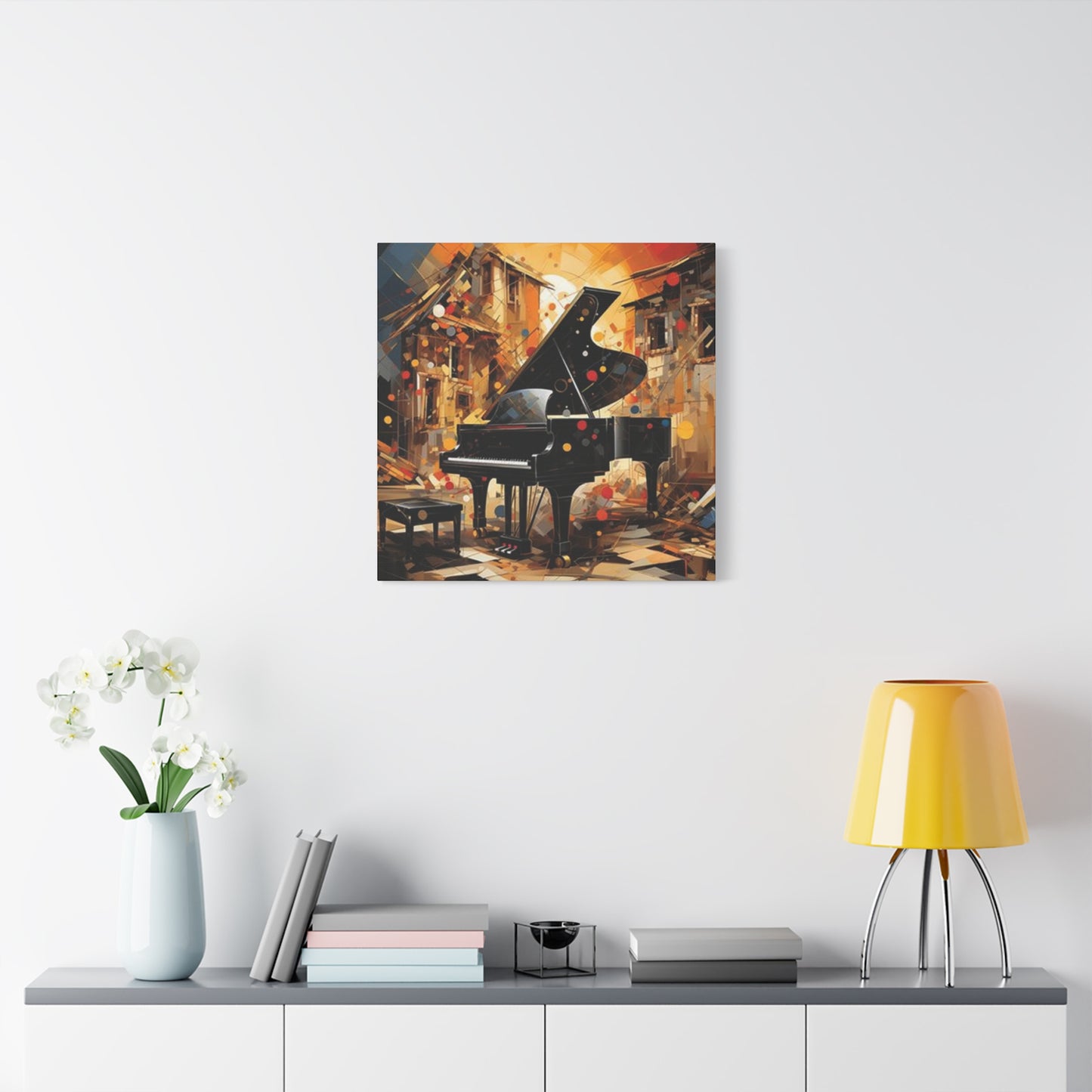
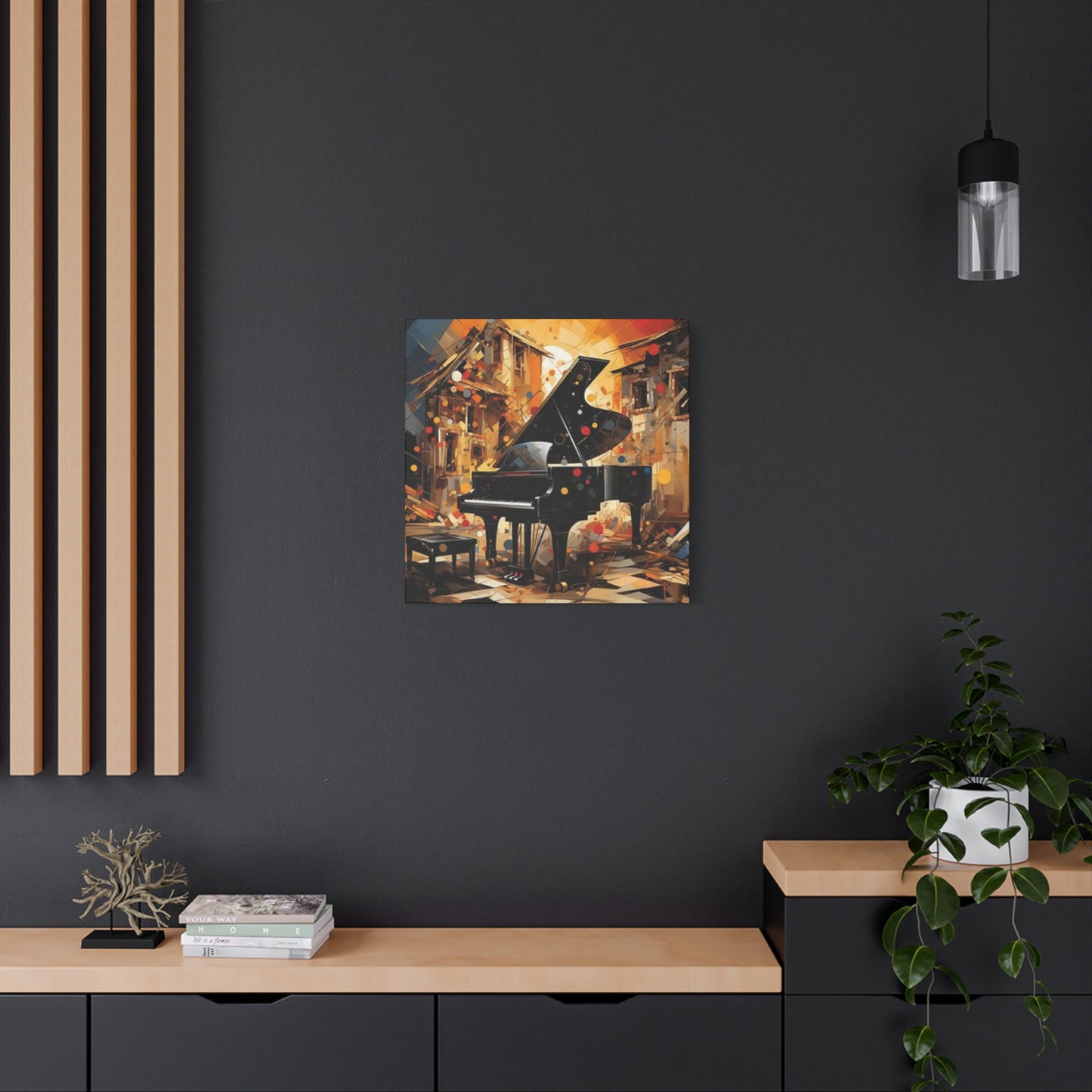
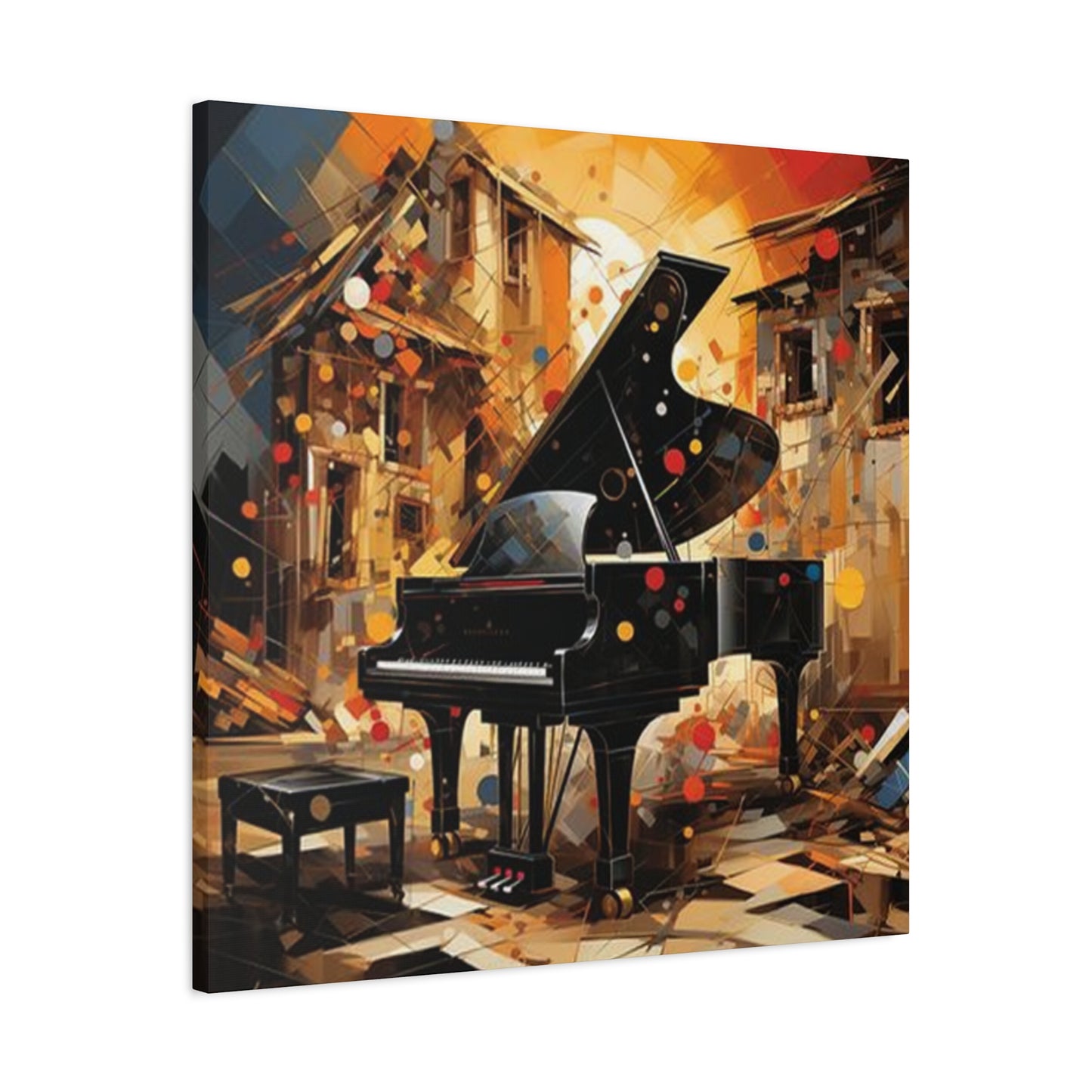
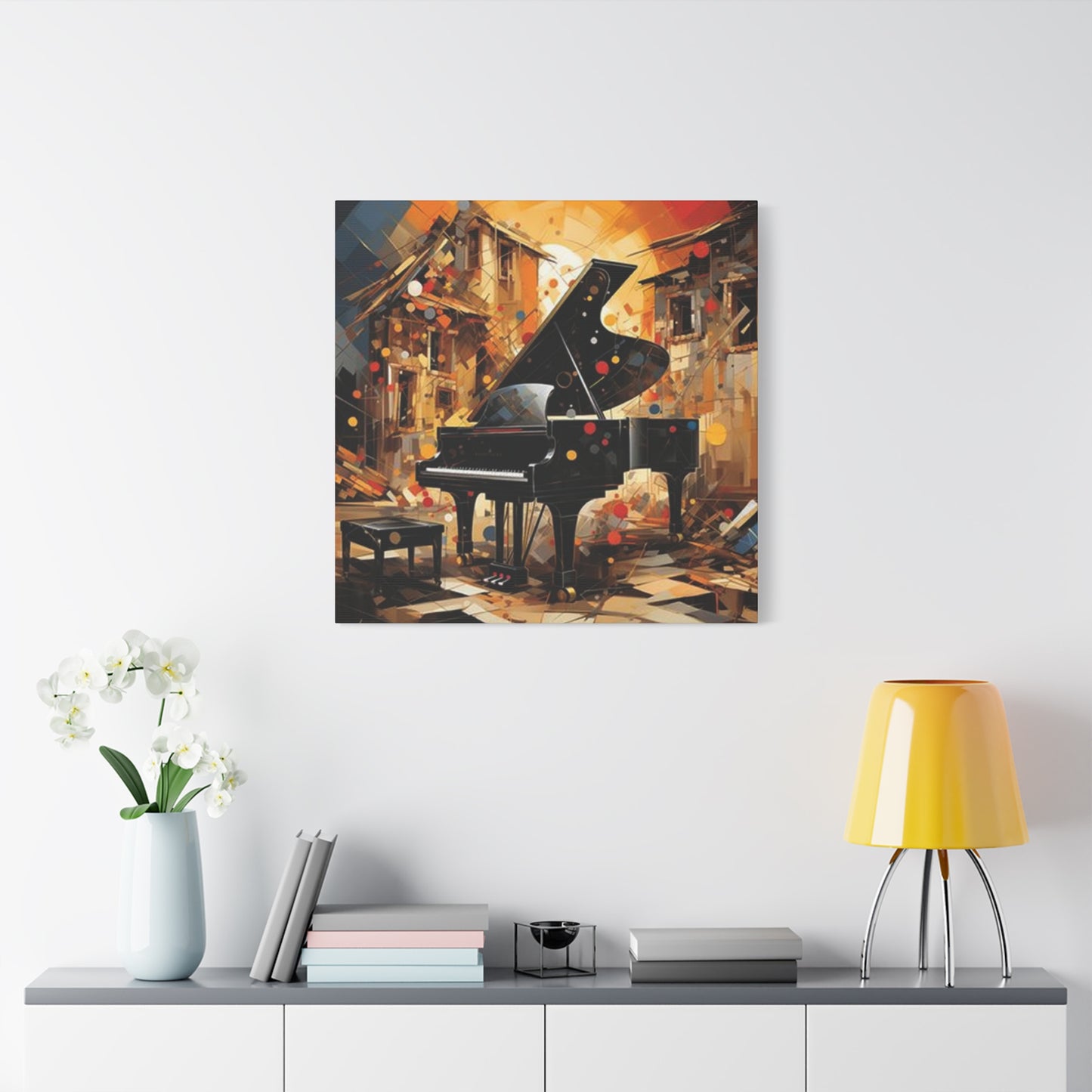

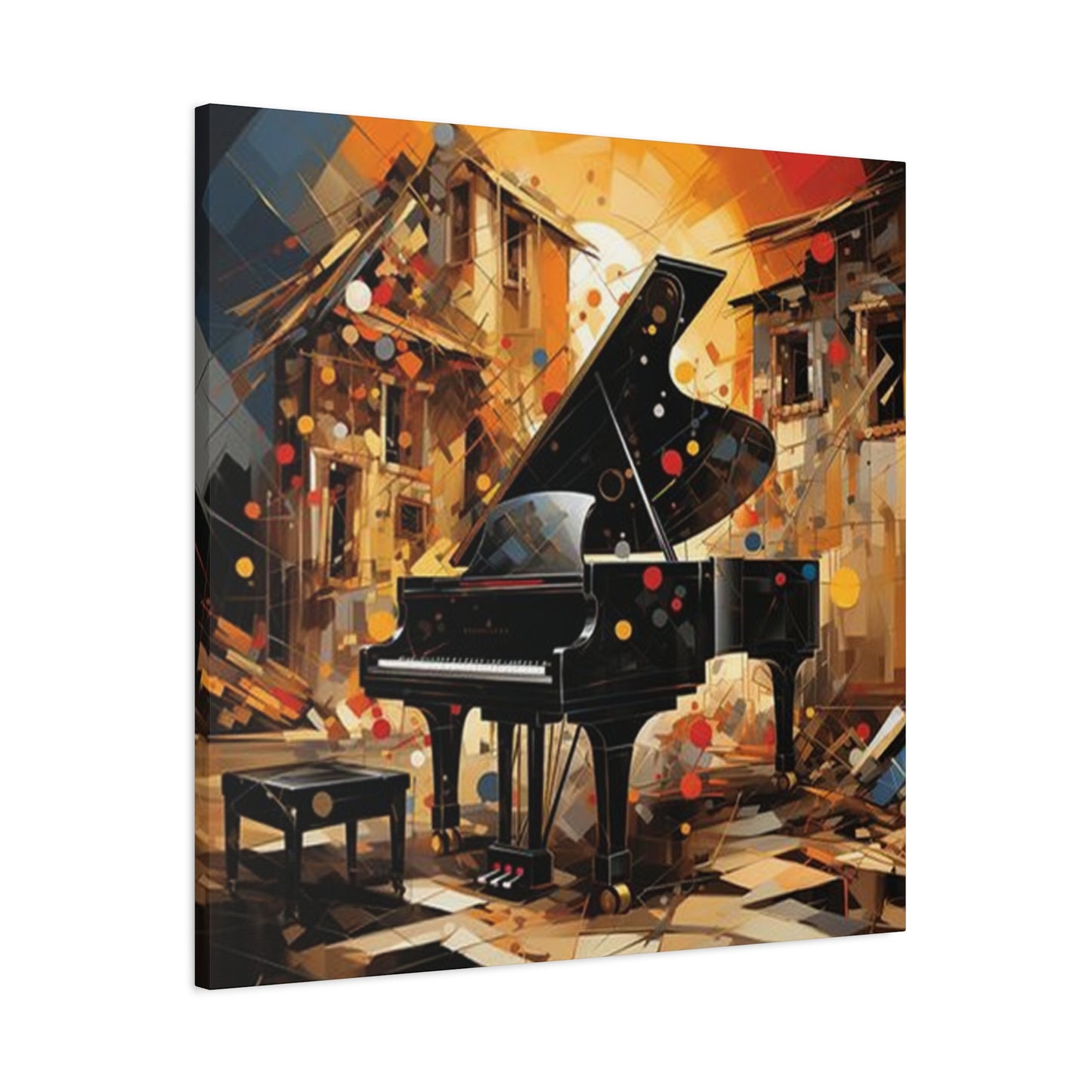

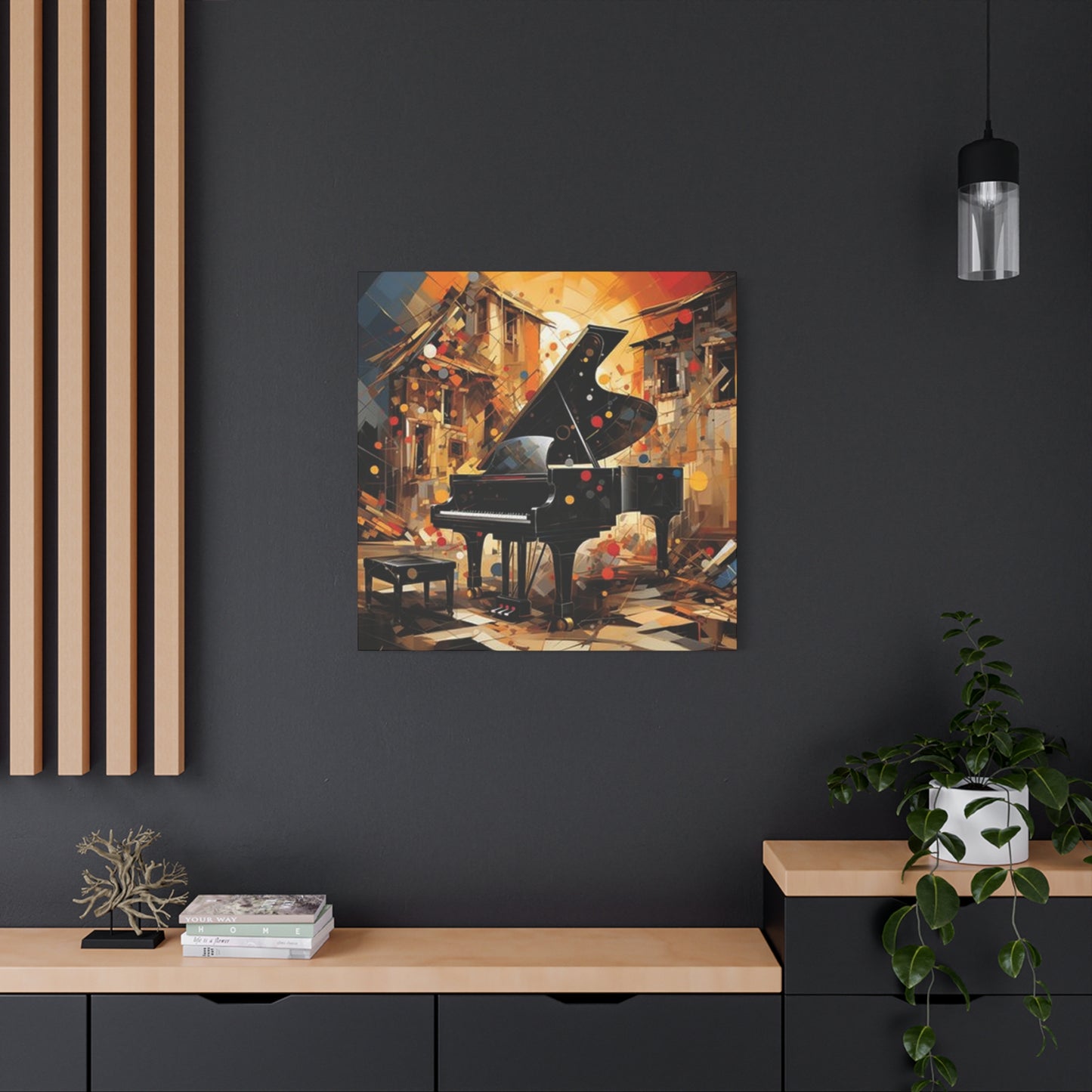

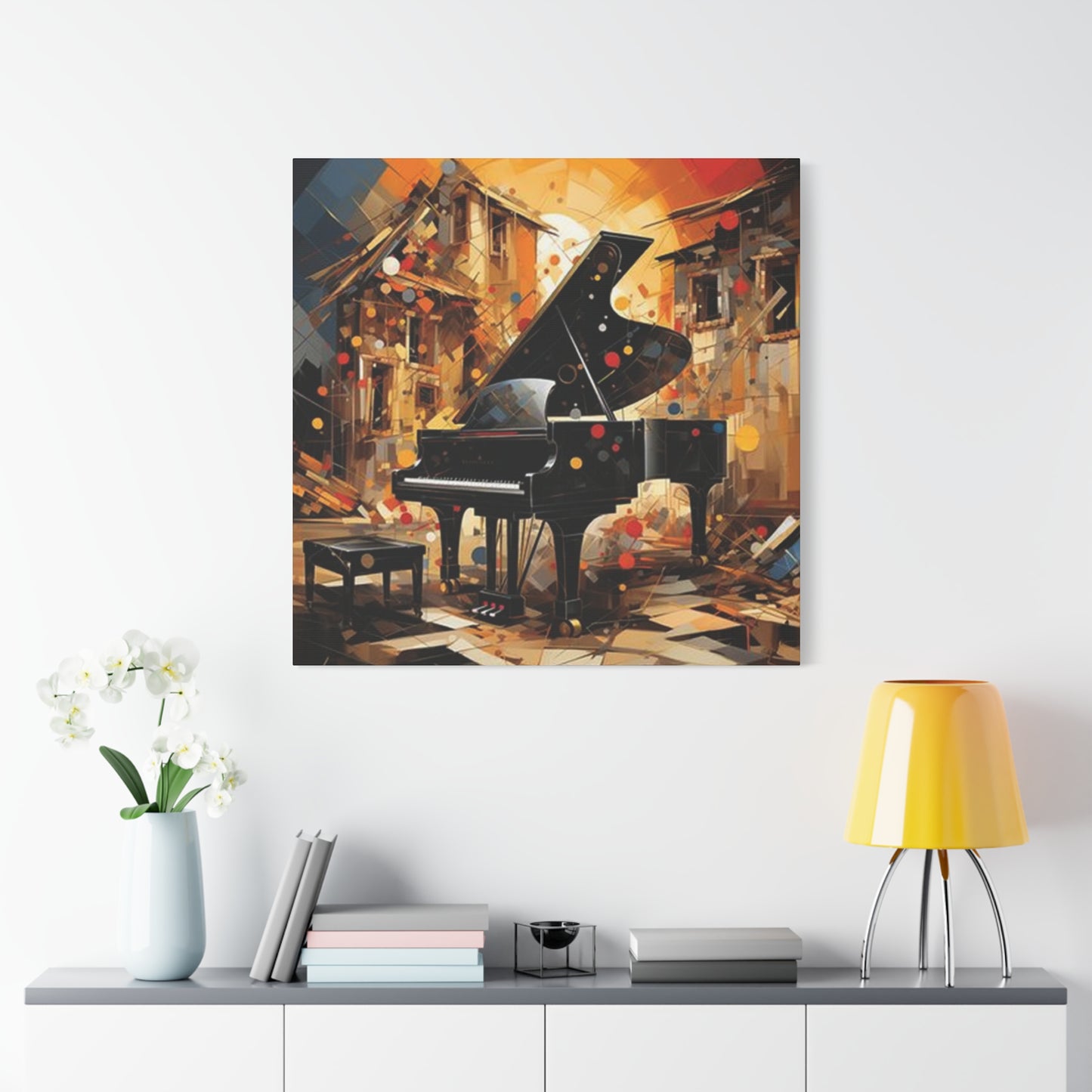
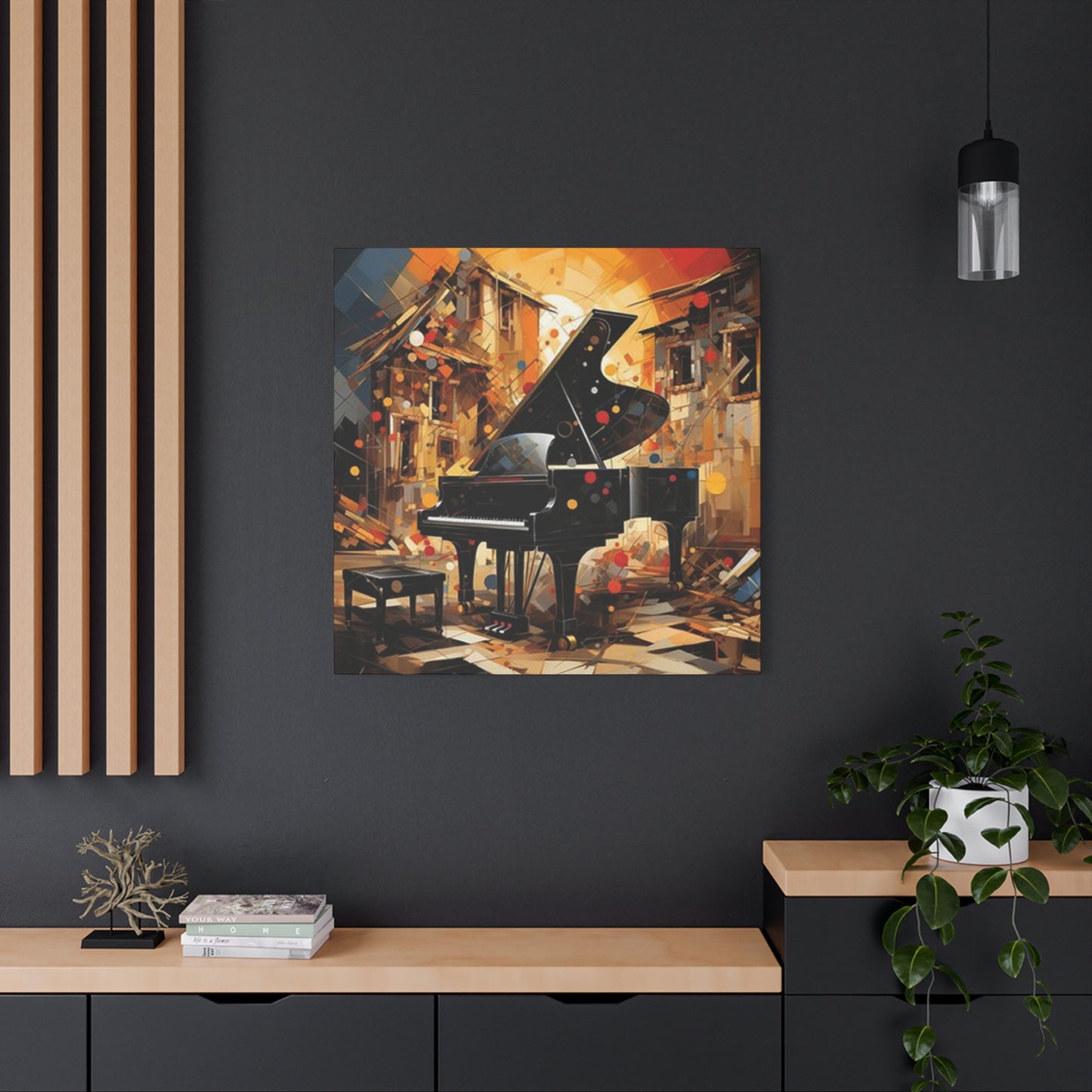
Black Piano painting Wall Art: Mastering the Canvas Through Musical Inspiration
The intersection of music and visual art has captivated artists for centuries, with the black piano emerging as one of the most compelling subjects in contemporary painting. This magnificent instrument, with its sleek ebony surface and ivory keys, represents far more than a musical tool—it embodies elegance, sophistication, and the profound connection between auditory and visual expression. Artists worldwide have discovered the unique allure of incorporating black pianos into their compositions, creating works that resonate with both music lovers and art enthusiasts.
The black piano serves as a powerful focal point in artistic compositions, offering endless possibilities for creative interpretation. Its polished surface reflects light in captivating ways, while its geometric form provides structure and balance to any painting. Whether rendered in photorealistic detail or interpreted through abstract expression, the black piano carries with it centuries of musical heritage and cultural significance that enriches every artistic work it graces.
Contemporary artists have embraced the black piano as a symbol of artistic refinement and creative inspiration. The instrument's presence in a painting immediately establishes an atmosphere of culture and sophistication, while its dark surface creates dramatic contrasts that enhance the overall visual impact of the work. From intimate domestic scenes to grand concert hall settings, the black piano adapts to various artistic contexts while maintaining its inherent dignity and grace.
The Sophisticated Grace of Ebony Instruments in Visual Arts
The sophisticated grace of ebony instruments in visual arts represents a fascinating exploration of form, function, and aesthetic beauty. Black pianos possess an inherent elegance that transcends their practical purpose as musical instruments, becoming objects of profound artistic contemplation. Artists have long been drawn to the sleek lines and reflective surfaces of these magnificent instruments, recognizing their potential to convey deep emotional and aesthetic meanings through visual representation.
The polished ebony surface of a black piano creates a mirror-like quality that reflects surrounding elements while simultaneously absorbing light in subtle ways. This dual nature makes black pianos particularly challenging and rewarding subjects for artists seeking to master the interplay of light and shadow. The gentle curves of the piano's body contrast beautifully with the straight lines of its legs and the geometric precision of its keyboard, creating a harmony of forms that speaks to both mathematical precision and organic flow.
Artists working with black piano subjects often discover that the instrument's surface becomes a canvas within the canvas, reflecting distorted images of the surrounding environment and creating layers of visual complexity. This reflective quality allows artists to incorporate multiple perspectives and dimensions into their work, as viewers can glimpse fragments of the room, other objects, or even themselves within the piano's polished surface.
The cultural associations surrounding black pianos add another dimension to their artistic appeal. These instruments are often associated with classical music, jazz, and other sophisticated musical genres, bringing with them connotations of education, refinement, and artistic achievement. When an artist includes a black piano in their composition, they tap into these rich cultural associations, creating works that resonate with viewers on multiple levels.
The challenge of accurately depicting the complex interplay of light and reflection on a black piano's surface has inspired countless artists to push the boundaries of their technical skills. The subtle gradations of tone required to capture the piano's lustrous surface demand a deep understanding of color theory and light behavior, making black piano paintings excellent exercises in artistic development and mastery.
Modern artists have also embraced the symbolic potential of black pianos, using them to represent themes of silence and sound, presence and absence, tradition and innovation. The instrument's ability to produce beautiful music when played contrasts with its silent presence when at rest, creating a poignant metaphor for artistic potential and creative expression.
Composition Techniques for Musical Instrument Still Life
Composition techniques for musical instrument still life, particularly featuring black pianos, require careful consideration of visual balance, narrative elements, and emotional impact. The arrangement of objects around a black piano must complement rather than compete with the instrument's natural dominance in the composition. Artists must consider how supporting elements such as sheet music, candles, flowers, or other decorative objects interact with the piano's imposing presence.
The placement of a black piano within the picture plane significantly affects the overall composition's success. Positioning the instrument at an angle creates dynamic tension and allows viewers to appreciate both its profile and keyboard simultaneously. This diagonal placement also helps establish depth and perspective, drawing the viewer's eye through the painting in a pleasing manner. Artists must carefully balance the piano's visual weight against other elements in the composition to avoid overwhelming the viewer while maintaining the instrument's role as the focal point.
Lighting plays a crucial role in black piano still life compositions, as the instrument's reflective surface can either enhance or detract from the overall visual harmony. Strategic placement of light sources creates dramatic highlights and deep shadows that emphasize the piano's sculptural qualities. The interplay between direct illumination and reflected light from the piano's surface adds complexity and visual interest to the composition while creating opportunities for subtle color variations within the predominantly dark tones.
The scale and proportion of supporting objects in relation to the black piano must be carefully considered to maintain visual coherence. Small objects like sheet music or decorative items should complement rather than overwhelm the piano's grandeur, while larger elements must be positioned to avoid competing for visual dominance. The artist's choice of supporting objects also contributes to the painting's narrative content, with each element adding layers of meaning and emotional resonance.
Color relationships in black piano still life paintings require sophisticated understanding of how colors interact with dark surfaces. The predominantly neutral palette of the black piano provides an excellent foundation for introducing selective color accents that can dramatically alter the composition's mood and emotional impact. Warm colors can create intimate, cozy atmospheres, while cool colors might suggest formal elegance or melancholy contemplation.
Texture variations add another layer of complexity to black piano still life compositions. The smooth, reflective surface of the piano contrasts beautifully with rougher textures like fabric, wood grain, or paper, creating tactile interest that engages viewers on multiple sensory levels. Artists must carefully render these textural differences to create convincing illusions of materiality while maintaining overall visual unity throughout the composition.
Creating Atmospheric Depth Through Piano Imagery
Creating atmospheric depth through piano imagery involves sophisticated manipulation of visual elements to suggest space, mood, and emotional resonance. Black pianos, with their substantial presence and reflective surfaces, offer unique opportunities for artists to explore atmospheric effects and spatial relationships. The instrument's dark mass can anchor a composition while its reflective qualities add layers of visual complexity that enhance the illusion of three-dimensional space.
The manipulation of atmospheric perspective around black pianos requires careful attention to how light behaves in different environmental conditions. Morning light streaming through windows creates soft, warm tones that can make the piano's surface glow with gentle luminosity, while harsh artificial lighting might create stark contrasts and dramatic shadows that emphasize the instrument's imposing presence. Artists must consider how these lighting conditions affect not only the piano itself but also the surrounding atmosphere and spatial relationships within the composition.
Depth perception in piano paintings can be enhanced through strategic use of overlapping forms, size relationships, and atmospheric perspective. Objects placed in front of the black piano appear closer to the viewer, while elements partially obscured by the instrument recede into the background. The piano's reflective surface can mirror distant objects, creating visual connections between foreground and background that enhance the overall sense of spatial depth.
Color temperature variations contribute significantly to atmospheric depth in black piano imagery. Warm colors tend to advance toward the viewer, while cool colors recede, creating natural depth cues that artists can exploit to enhance spatial illusion. The neutral tones of a black piano provide an excellent foundation for these color temperature manipulations, allowing warm and cool accents to create dramatic spatial effects without overwhelming the composition's overall harmony.
The psychological impact of atmospheric depth in piano paintings cannot be underestimated. Deep, mysterious spaces around black pianos can evoke feelings of contemplation and introspection, while bright, airy environments might suggest joy and celebration. Artists can manipulate these atmospheric qualities to guide viewers' emotional responses and create powerful connections between the visual elements and underlying themes or narratives.
Technical approaches to creating atmospheric depth include careful gradation of values, strategic use of hard and soft edges, and sophisticated understanding of how light scatters and reflects in different atmospheric conditions. The black piano's surface serves as an excellent reference point for these technical considerations, as its reflective qualities reveal the subtle variations in atmospheric conditions that might otherwise go unnoticed.
Color Theory Applications in Monochromatic Piano Art
Color theory applications in monochromatic piano art present unique challenges and opportunities for artists seeking to create compelling visual statements while working within limited color palettes. Black pianos naturally lend themselves to monochromatic approaches, as their dominant dark tones establish a clear foundation for exploring subtle variations within restricted color schemes. Artists working in monochromatic palettes must develop sophisticated understanding of value relationships, temperature variations, and textural contrasts to create visually engaging compositions without relying on dramatic color contrasts.
The exploration of warm and cool variations within monochromatic schemes adds depth and visual interest to black piano paintings. Even within seemingly neutral palettes, artists can introduce subtle temperature shifts that create atmospheric effects and enhance the illusion of form and space. Warm blacks and grays suggest intimacy and comfort, while cool variations might evoke formality or melancholy, demonstrating how subtle color temperature changes can dramatically affect a painting's emotional impact.
Value relationships become particularly critical in monochromatic piano art, as artists must rely on tonal variations rather than color contrasts to define forms and create visual hierarchy. The black piano's reflective surface provides excellent opportunities for exploring the full range of values, from the deepest shadows in its interior recesses to the brilliant highlights on its polished surface. These extreme value contrasts create dramatic visual impact while maintaining the monochromatic color scheme's elegant simplicity.
Textural contrasts gain increased importance in monochromatic piano compositions, as artists must find ways to create visual interest without relying on color variation. The smooth, reflective surface of the black piano contrasts beautifully with rougher textures like fabric, paper, or natural materials, creating tactile interest that engages viewers on multiple sensory levels. These textural variations also provide opportunities for subtle color temperature shifts within the overall monochromatic scheme.
The psychological impact of monochromatic piano art often proves more powerful than colorful alternatives, as the restricted palette forces viewers to focus on form, composition, and emotional content rather than being distracted by complex color relationships. This focused attention can create deeper, more contemplative viewing experiences that resonate with the piano's traditional associations with serious musical expression and artistic refinement.
Advanced color theory applications in monochromatic piano art include exploration of color mixing effects within neutral palettes, understanding how different black pigments behave when mixed with small amounts of other colors, and mastering the subtle gradations required to create convincing illusions of form and space within limited color schemes. These technical considerations require significant artistic skill and experience to execute successfully.
Symbolic Representation of Sound Through Visual Elements
Symbolic representation of sound through visual elements in black piano art creates fascinating intersections between auditory and visual experience. Artists have developed numerous techniques for suggesting musical qualities through purely visual means, transforming silent paintings into evocative representations of sound, rhythm, and musical emotion. The black piano serves as an ideal focal point for these explorations, as its cultural associations with music are immediately recognizable to viewers.
Visual rhythm in piano paintings can be established through repetitive elements, such as the alternating pattern of black and white keys, the regular spacing of piano legs, or the rhythmic arrangement of sheet music scattered around the instrument. These visual rhythms create a sense of movement and temporal progression that mirrors the experience of listening to music, allowing viewers to feel the pulse and flow of musical time through purely visual means.
The representation of sound waves and musical vibrations through abstract visual elements adds another layer of symbolic meaning to black piano art. Artists might incorporate flowing lines, radiating patterns, or undulating forms that suggest the invisible movement of sound through space. These abstract elements can be subtly integrated into realistic piano compositions or boldly expressed in more experimental works that push the boundaries between representation and abstraction.
Color symbolism plays a crucial role in representing different musical qualities through visual elements. While black pianos naturally suggest the depth and richness of bass tones, artists can introduce color accents that represent higher pitches, different instruments, or emotional qualities associated with specific musical passages. The strategic use of warm and cool colors can suggest major and minor keys, while bright accents might represent crescendos or climactic musical moments.
The symbolic representation of silence proves equally important in black piano art, as the contrast between sound and silence creates powerful emotional and aesthetic effects. Empty spaces around the piano, muted color palettes, and static compositions can effectively represent the profound silence that exists between musical notes, creating contemplative works that explore the relationship between presence and absence, sound and quiet.
Dynamic visual elements can represent the energy and movement inherent in musical performance, even when depicting a silent, unplayed piano. The artist's brushwork, the direction of light, the arrangement of surrounding objects, and the overall compositional flow can all contribute to a sense of potential energy that suggests the music waiting to emerge from the instrument's silent keys.
Lighting Strategies for Dramatic Piano Portraits
Lighting strategies for dramatic piano portraits require sophisticated understanding of how light interacts with the complex surfaces and forms of black pianos. The instrument's combination of highly reflective areas, deep shadows, and subtle gradations creates unique challenges and opportunities for artists seeking to create compelling visual narratives through strategic illumination. Mastering these lighting effects enables artists to transform simple piano studies into powerful, emotionally resonant works of art.
Directional lighting creates some of the most dramatic effects in black piano portraits, with strong side lighting emphasizing the instrument's sculptural qualities while creating bold contrasts between illuminated and shadowed areas. This type of lighting reveals the subtle curves and elegant proportions of the piano's form while creating mysterious shadows that add depth and atmosphere to the composition. The angle and intensity of directional lighting must be carefully controlled to avoid overwhelming the composition with excessive contrast.
Backlighting strategies can create stunning silhouette effects that emphasize the piano's distinctive profile while creating atmospheric depth and mystery. When properly executed, backlighting transforms the black piano into a dramatic focal point surrounded by glowing atmospheric effects. This technique requires careful attention to edge quality and value relationships to maintain the piano's recognizable form while creating the desired atmospheric effects.
Multiple light source arrangements allow for more complex and nuanced lighting effects in piano portraits. Combining natural window light with artificial illumination creates opportunities for warm and cool color temperature contrasts that add visual interest and emotional depth to the composition. The interplay between different light sources can create subtle fill lighting that reveals important details while maintaining overall dramatic impact.
Reflected lighting from the piano's polished surface adds another layer of complexity to lighting strategies, as the instrument essentially becomes a secondary light source that illuminates surrounding objects and surfaces. Artists must carefully consider how these reflections affect the overall lighting scheme and use them to enhance rather than detract from the primary lighting effects. The piano's reflective surface can be used to bounce light into shadowed areas or to create interesting secondary highlights on nearby objects.
Atmospheric lighting effects, such as those created by dust motes in sunbeams or the soft glow of candlelight, can add romantic or mysterious qualities to piano portraits. These effects require subtle handling to avoid overwhelming the primary subject while adding the desired atmospheric enhancement. The key to successful atmospheric lighting lies in maintaining the proper balance between dramatic effect and natural believability.
Abstract Interpretations of Musical Instruments
Abstract interpretations of musical instruments, particularly black pianos, offer artists freedom to explore the emotional and conceptual essence of music through non-representational visual language. These approaches move beyond literal depiction to capture the feelings, energies, and abstract qualities associated with musical instruments and their cultural significance. Black pianos, with their rich cultural associations and elegant forms, provide excellent subjects for abstract artistic exploration.
Gestural abstraction techniques can capture the dynamic energy and movement associated with piano performance without depicting the instrument in realistic detail. Bold brushstrokes, flowing lines, and energetic mark-making can suggest the physical gestures of piano playing while creating visually exciting compositions that pulse with rhythmic energy. These gestural approaches often prove more successful at conveying musical energy than realistic depictions, as they engage viewers' emotional responses directly.
Color field approaches to piano abstraction might use the instrument's predominantly black coloration as a starting point for exploring relationships between dark and light, warm and cool, or complementary color combinations. Large areas of color can suggest the piano's substantial presence while avoiding specific representational details. This approach allows artists to focus on pure color relationships and their emotional impact rather than technical rendering challenges.
Geometric abstraction offers another avenue for exploring piano imagery, as the instrument's rectangular form and regular keyboard pattern provide natural starting points for geometric compositions. Artists can deconstruct and reconstruct these basic forms to create dynamic compositions that maintain references to the original instrument while exploring pure formal relationships. The contrast between organic curves and geometric precision in piano design provides rich material for geometric abstract interpretation.
Textural abstraction focuses on the varied surface qualities found in piano construction, from the smooth polish of the case to the felt hammers and wire strings inside. Artists can explore these textural contrasts through varied paint application techniques, creating compositions that engage viewers' tactile imagination while maintaining abstract visual interest. These textural explorations often prove particularly effective at suggesting the piano's complex construction and mechanical precision.
Conceptual abstraction might use piano imagery as a starting point for exploring broader themes related to music, culture, education, or artistic expression. These works might incorporate symbolic elements, text, or mixed media components that extend the meaning beyond simple instrumental representation. The black piano becomes a vehicle for examining larger cultural and philosophical questions about art, creativity, and human expression.
Expressionist Approaches to Keyboard Compositions
Expressionist approaches to keyboard compositions emphasize emotional content and subjective interpretation over realistic representation, using bold colors, distorted forms, and energetic brushwork to convey the artist's inner response to the piano as both object and symbol. These approaches treat the black piano not merely as a subject to be depicted but as a catalyst for emotional and psychological exploration through visual means.
Emotional color choices in expressionist piano paintings often depart dramatically from realistic coloration, using unexpected hues to convey specific feelings or moods associated with the instrument or musical experience. A black piano might be rendered in deep blues to suggest melancholy, vibrant reds to express passion, or acidic greens to convey tension or discord. These color choices communicate emotional content directly to viewers, creating immediate psychological impact that transcends literal representation.
Distorted proportions and exaggerated forms can emphasize specific aspects of the piano's character or cultural significance while creating visually dynamic compositions. An expressionist artist might elongate the keyboard to emphasize the musical potential of the instrument, enlarge the pedals to suggest the physical engagement required for performance, or distort the case to create more dynamic visual movement throughout the composition.
Brushwork and mark-making techniques in expressionist piano paintings often mirror the physical gestures and rhythmic patterns associated with musical performance. Aggressive, staccato brushstrokes might suggest percussive musical passages, while flowing, legato marks could represent melodic lines. This correlation between painting technique and musical expression creates works that engage viewers on multiple sensory levels.
Compositional arrangements in expressionist keyboard paintings frequently prioritize emotional impact over realistic spatial relationships. Objects might be arranged according to their psychological rather than physical relationships, creating dreamlike or fantastical environments that reflect the artist's subjective response to the musical instrument and its cultural associations.
The integration of symbolic elements enhances the expressionist approach to piano composition, as artists can incorporate objects, figures, or abstract forms that represent personal associations with music, performance, or cultural meaning. These symbolic additions transform simple piano studies into complex psychological landscapes that invite viewers to explore their own emotional responses to music and artistic expression.
Surreal Interpretations in Piano Dreamscapes
Surreal interpretations in piano dreamscapes transport viewers into fantastical worlds where black pianos exist outside normal physical laws and logical relationships. These imaginative compositions combine realistic piano imagery with impossible or dreamlike elements to create visually striking works that challenge viewers' perceptions and expectations. Surreal piano art explores the unconscious associations and symbolic meanings attached to musical instruments while creating memorable visual experiences.
Metamorphosis effects in surreal piano compositions might show the instrument transforming into other objects or living creatures, suggesting the piano's ability to generate life and beauty through music. These transformational elements can be subtly suggested through ambiguous forms or boldly depicted through obvious morphing effects. The key to successful metamorphosis lies in maintaining enough recognizable piano characteristics to preserve the work's conceptual foundation while introducing enough fantastic elements to create surreal impact.
Impossible spatial relationships create another hallmark of surreal piano imagery, as artists might depict pianos floating in air, existing simultaneously in multiple locations, or occupying spaces that defy normal architectural logic. These spatial impossibilities suggest the transcendent nature of music and its ability to transport listeners beyond physical limitations. Careful attention to rendering quality helps maintain visual credibility even within impossible scenarios.
Scale relationships in surreal piano dreamscapes often violate normal proportional expectations, creating dramatic visual impact and psychological resonance. Gigantic pianos might dominate miniature human figures, suggesting the overwhelming power of music, while tiny pianos in vast spaces could represent the intimate, personal nature of musical expression. These scale manipulations require careful compositional consideration to maintain visual balance and narrative coherence.
Temporal ambiguity allows surreal piano compositions to suggest multiple time periods simultaneously, perhaps showing the same piano in different eras or depicting the historical evolution of the instrument within a single image. These temporal effects can create rich, layered meanings that explore music's role in human culture and artistic development across time periods.
Dream logic governs the narrative elements in surreal piano compositions, allowing for non-sequential events, contradictory elements, and impossible relationships that mirror the experience of dreams and unconscious thought. This dream logic enables artists to explore personal and cultural associations with pianos and music without being constrained by realistic limitations or logical consistency.
Capturing Reflective Piano Surfaces
Techniques for capturing reflective piano surfaces require sophisticated understanding of how light behaves on highly polished, curved surfaces and how these reflections contribute to the overall composition's success. The mirror-like quality of a well-maintained black piano creates complex visual effects that challenge artists to master advanced observational and technical skills while creating opportunities for stunning visual impact.
Observation strategies for reflective surfaces begin with careful analysis of how surrounding elements appear in the piano's polished surface. These reflections are rarely perfect mirror images but instead show distorted, fragmented views that depend on the viewing angle, surface curvature, and lighting conditions. Artists must learn to see these reflections as abstract color and value patterns rather than trying to identify specific reflected objects.
Value relationships in reflective surfaces prove more complex than those found on matte surfaces, as the piano's polish creates extreme contrasts between brilliant highlights and deep shadows. These value extremes require careful handling to maintain believable surface quality while avoiding excessive contrast that might overwhelm the composition. The gradual transitions between highlights and shadows reveal the subtle curves and forms of the piano's sculptural surface.
Color temperature variations in reflections add another layer of complexity to piano surface rendering, as reflected colors often appear cooler or more neutral than their sources. Understanding these temperature shifts enables artists to create convincing surface illusions while maintaining overall color harmony throughout the composition. The piano's neutral coloration provides an excellent foundation for these subtle color temperature effects.
Edge quality considerations play a crucial role in successful reflective surface rendering, as the transitions between reflected images and the piano's base color require careful attention to hardness and softness. Sharp edges typically appear where highly contrasted elements meet, while softer edges suggest gradual transitions or out-of-focus reflections. Mastering these edge quality variations is essential for creating convincing surface illusions.
Technical approaches to rendering reflective surfaces include careful color mixing to achieve the subtle variations found in piano polish, understanding how different painting mediums behave when creating smooth, even surfaces, and developing the patience required for the gradual building of complex reflective effects. These technical skills develop through practice and careful observation of actual reflective surfaces under various lighting conditions.
Color Contrast Methods in Piano Artwork
Color contrast methods in piano artwork enable artists to create visually striking compositions that emphasize the dramatic potential of pairing black pianos with carefully selected color schemes. The piano's predominantly neutral coloration provides an excellent foundation for color contrast experiments, as its dark surface can make adjacent colors appear more vibrant while its neutral character prevents color clashing that might occur with more chromatic subjects.
Complementary color relationships create some of the most dynamic contrasts in piano artwork, as warm oranges and reds against the cool blacks and grays of the piano generate visual excitement and emotional energy. These complementary pairings can be subtle, appearing only in small accents like flowers or fabric, or bold, dominating large areas of the composition. The key to successful complementary contrast lies in balancing the proportions of contrasting colors to create harmony rather than visual conflict.
Analogous color schemes offer more subtle contrast opportunities, using closely related colors to create gentle, harmonious effects that complement rather than compete with the piano's elegant presence. These schemes might feature various blues and purples that echo the cool undertones often found in black piano surfaces, or warm earth tones that suggest the traditional wood finishes associated with piano construction. Analogous schemes create sophisticated, refined compositions that appeal to viewers seeking elegant rather than dramatic visual experiences.
Monochromatic contrast approaches focus on value and temperature variations within limited color ranges, creating sophisticated effects that emphasize form, light, and atmosphere rather than dramatic color relationships. These approaches require advanced technical skills to create visual interest without relying on obvious color contrasts, making them excellent exercises for developing artistic sensitivity and technical proficiency.
Temperature contrast methods pair warm and cool colors to create spatial depth and emotional resonance in piano compositions. Cool colors typically recede into background areas while warm colors advance toward the viewer, creating natural depth effects that enhance the piano's three-dimensional presence. These temperature contrasts can also suggest different times of day, seasonal changes, or emotional states associated with musical expression.
Intensity contrast techniques juxtapose highly saturated colors against the piano's neutral tones to create focal points and guide viewer attention throughout the composition. Small areas of intense color can have dramatic impact against the piano's dark surface, while muted colors create subtle, sophisticated effects that suggest refinement and elegance. Understanding how color intensity affects visual hierarchy enables artists to create compositions that guide viewers' attention effectively.
Perspective Studies in Musical Still Life
Perspective studies in musical still life compositions require careful consideration of how three-dimensional space is represented on flat surfaces, with black pianos presenting unique challenges due to their size, complex geometry, and cultural significance as focal points. Mastering perspective in piano compositions enables artists to create convincing spatial illusions that enhance the viewer's sense of being present within the depicted space.
Linear perspective principles apply to piano compositions through the careful observation of how the instrument's parallel edges converge toward vanishing points. The rectangular form of most pianos provides clear examples of perspective effects, from the converging lines of the keyboard to the foreshortening visible in the piano's body when viewed from various angles. These perspective effects must be carefully observed and accurately rendered to maintain spatial believability.
Atmospheric perspective effects become particularly important in larger piano compositions, where the instrument might be placed within spacious interior environments. Objects and surfaces that appear closer to the viewer show greater contrast, sharper focus, and more vibrant colors, while distant elements become progressively lighter, softer, and less distinct. The piano's position within this atmospheric progression helps establish its spatial location and relative importance.
Foreshortening challenges arise when pianos are viewed from unusual angles, requiring artists to accurately depict how forms appear compressed or extended based on their orientation relative to the viewer. The curved lid of a grand piano presents particular foreshortening challenges, as its elliptical shape must be convincingly rendered to maintain the illusion of three-dimensional form. These foreshortening effects require careful observation and often benefit from photographic reference material.
Multiple viewpoint compositions can create dynamic visual interest by suggesting movement around the piano or showing different aspects of the instrument simultaneously. These approaches might combine profile and frontal views within a single composition or use reflection and shadow effects to suggest multiple spatial perspectives. Such complex perspective treatments require careful planning to maintain visual coherence while creating desired dynamic effects.
Scale relationships in piano perspective studies must accurately reflect the instrument's substantial size relative to human figures and domestic objects. Grand pianos are impressive objects whose scale can be effectively used to create dramatic spatial effects, while upright pianos might be integrated more intimately into domestic environments. Understanding these scale relationships helps artists create compositions that feel spatially convincing and emotionally appropriate.
Texture Rendering in Black Piano Studies
Texture rendering in black piano studies encompasses the diverse surface qualities found in piano construction, from the mirror-like polish of the exterior case to the complex mechanical textures of the internal components. Successfully capturing these varied textures requires different technical approaches and careful attention to how light reveals surface characteristics through highlights, shadows, and reflected elements.
Polished surface textures present the greatest technical challenges in piano studies, as artists must convincingly render the complex interplay of reflections, highlights, and subtle color variations that characterize high-quality piano finishes. These surfaces require smooth paint application and careful attention to gradual value transitions, as any roughness in the paint surface will compromise the illusion of polished smoothness. Building these effects gradually through multiple layers often produces more convincing results than attempting to achieve them in single paint applications.
Keyboard textures involve the contrasting materials of ivory or plastic keys, ebony sharps, and the subtle gaps and shadows between individual keys. Each key catches light differently depending on its angle and material, creating complex patterns of highlights and shadows that define the keyboard's three-dimensional character. The regular rhythm of key placement provides opportunities for creating visual patterns that suggest musical rhythm and meter.
Fabric textures might appear in piano bench cushions, decorative draping, or sheet music covers, providing contrasting surface qualities that enhance the overall textural variety of the composition. These softer textures require different painting approaches than hard piano surfaces, often benefiting from looser brushwork and attention to how fabric drapes and folds according to gravity and underlying support structures.
Metal hardware textures include hinges, pedals, music stands, and decorative elements that add sparkle and visual interest to piano compositions. These metallic surfaces reflect light sharply and often show strong color temperature contrasts between warm and cool reflections. Rendering metal convincingly requires attention to how reflections appear on curved surfaces and understanding how different metal finishes affect reflective characteristics.
Wood grain textures might appear in older pianos, piano benches, or surrounding furniture, adding warmth and natural character to compositions dominated by the piano's artificial surfaces. Wood textures require understanding of how grain patterns follow the underlying form and how different wood finishing techniques affect surface appearance. These natural textures provide excellent counterpoints to the piano's manufactured precision.
Interior Design Integration with Piano Art
Interior design integration with piano art requires understanding how painted piano images can enhance and complement actual living spaces while considering the cultural and aesthetic associations that pianos bring to domestic environments. Successful integration depends on matching the painting's style, scale, and emotional content to the intended environment while ensuring that the artwork enhances rather than overwhelms the space's existing design elements.
Scale considerations prove crucial when selecting or commissioning piano artwork for specific interior spaces, as paintings that are too large might dominate the room while those that are too small could appear insignificant against the substantial visual weight typically associated with piano imagery. The painting's scale should complement existing furniture and architectural elements while providing appropriate visual impact for its intended location within the home or commercial space.
Color coordination between piano artwork and interior design elements requires careful attention to existing color schemes and desired atmospheric effects. Black piano paintings naturally complement neutral design palettes while providing opportunities for strategic color accents that can tie into existing decorative elements. The sophisticated associations of piano imagery make these works particularly suitable for formal living areas, music rooms, or spaces intended for contemplation and cultural activities.
Lighting design considerations become particularly important when displaying piano artwork, as the paintings often feature complex light effects and reflective surfaces that can create visual confusion if poorly lit. Gallery lighting that minimizes glare while providing adequate illumination helps viewers appreciate the subtle details and atmospheric effects that characterize successful piano paintings. The lighting should complement rather than compete with any light effects depicted within the artwork itself.
Thematic coordination allows piano artwork to reinforce existing interior design themes related to music, culture, education, or artistic refinement. These paintings work particularly well in homes where music plays an important role, whether through actual instrument ownership or appreciation for musical culture. The artwork can serve as a focal point that expresses the inhabitants' values and interests while contributing to the space's overall aesthetic character.
Placement strategies for piano artwork should consider viewing angles, traffic patterns, and the relationship between the painting and actual furniture or architectural elements within the space. Piano paintings often work best when they can be contemplated from comfortable seating areas, allowing viewers time to appreciate the technical skill and emotional content that characterize successful examples of this genre.
Cultural Significance of Piano Imagery
Cultural significance of piano imagery extends far beyond simple instrumental representation, encompassing centuries of social, educational, and artistic associations that continue to resonate in contemporary visual culture. The piano's evolution from aristocratic luxury item to middle-class cultural symbol has created rich layers of meaning that artists can explore and exploit in their visual interpretations of these magnificent instruments.
Historical associations connect pianos with educational achievement, cultural refinement, and social aspiration, as piano ownership and proficiency have long served as markers of middle-class respectability and artistic sophistication. These associations make piano imagery particularly powerful in artworks that explore themes of culture, education, family values, and social position. Artists can tap into these cultural meanings to create works that resonate with viewers' personal and cultural experiences.
Musical genre associations link different piano types and contexts with specific musical styles and cultural movements. Grand pianos suggest classical music, concert performance, and formal cultural events, while upright pianos might evoke jazz, popular music, and intimate domestic music-making. These genre associations enable artists to suggest specific musical atmospheres and cultural contexts through their choice of piano type and environmental setting.
Gender associations with piano playing, particularly the historical connection between young women and piano instruction, add another layer of cultural meaning to piano imagery. Artists can explore these gendered aspects of piano culture while also challenging or updating traditional associations to reflect contemporary musical and cultural realities. These explorations can create opportunities for social commentary and cultural critique within seemingly simple instrumental studies.
Class associations connect piano ownership with economic status and cultural capital, as these expensive instruments have traditionally served as symbols of family prosperity and cultural values. Artists can explore these class dimensions through their treatment of piano types, environmental settings, and associated objects, creating works that comment on social structure and cultural hierarchy.
International variations in piano culture provide opportunities for artists to explore how different societies and cultures have adapted and interpreted piano music and piano ownership. These cultural variations can inspire artwork that celebrates diversity while acknowledging the piano's role as a truly international cultural phenomenon that transcends national and cultural boundaries.
Conclusion
Contemporary trends in musical instrument art reflect broader changes in artistic practice, cultural values, and technological capabilities while maintaining connections to traditional approaches and classical subjects. Piano imagery continues to evolve as artists find new ways to interpret these familiar instruments while addressing current aesthetic and conceptual concerns that resonate with contemporary audiences.
Digital integration represents one of the most significant contemporary trends in musical instrument art, as artists increasingly incorporate digital techniques into traditional piano imagery or create entirely digital interpretations of piano subjects. These approaches can enhance traditional techniques through digital color correction, special effects, or hybrid compositions that combine painted and digital elements. Some artists create entirely virtual piano environments that would be impossible to achieve through traditional media alone.
Environmental awareness influences contemporary piano art as artists address themes of sustainability, material culture, and consumer society through their treatment of these substantial manufactured objects. Some works might explore the environmental cost of piano manufacturing and ownership, while others celebrate the instruments' durability and potential for multi-generational use. These environmental considerations add contemporary relevance to traditional piano imagery.
Multicultural perspectives enrich contemporary piano art as artists from diverse cultural backgrounds bring their unique viewpoints to traditional European instrument imagery. These perspectives might incorporate non-Western aesthetic traditions, address issues of cultural appropriation and musical colonialism, or celebrate the piano's adoption and adaptation within various global musical traditions. Such multicultural approaches expand the cultural resonance and relevance of piano imagery.
Mixed media approaches combine traditional painting techniques with photography, collage, sculpture, or installation elements to create complex works that engage viewers through multiple sensory channels. These hybrid approaches might incorporate actual piano components, sound elements, or interactive features that blur the boundaries between visual art and musical performance. Such innovative approaches keep piano imagery relevant for contemporary art audiences.
Social media influences affect how artists create and share piano artwork, with many works now designed for digital display and viral sharing rather than traditional gallery presentation. These considerations might influence compositional choices, color palettes, and subject matter selection to ensure maximum visual impact within digital viewing contexts.



















